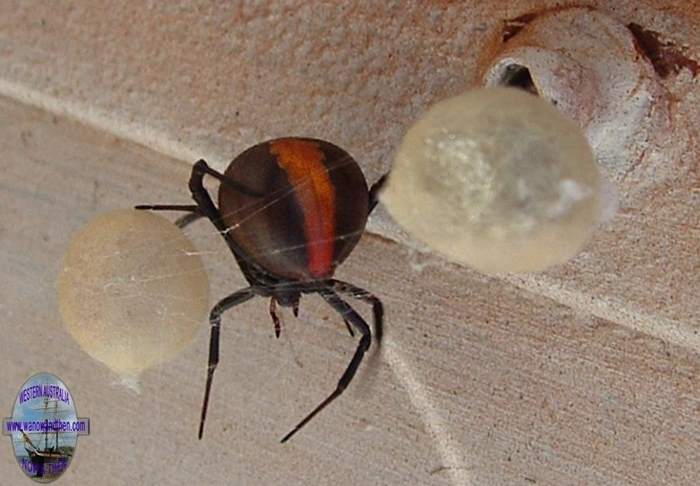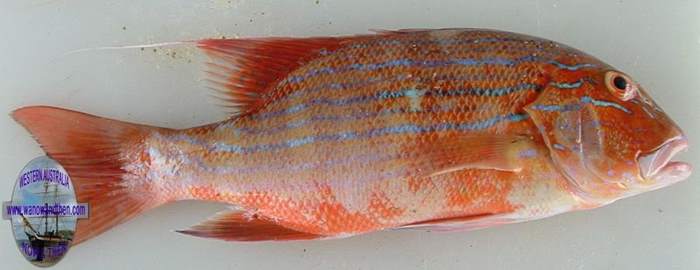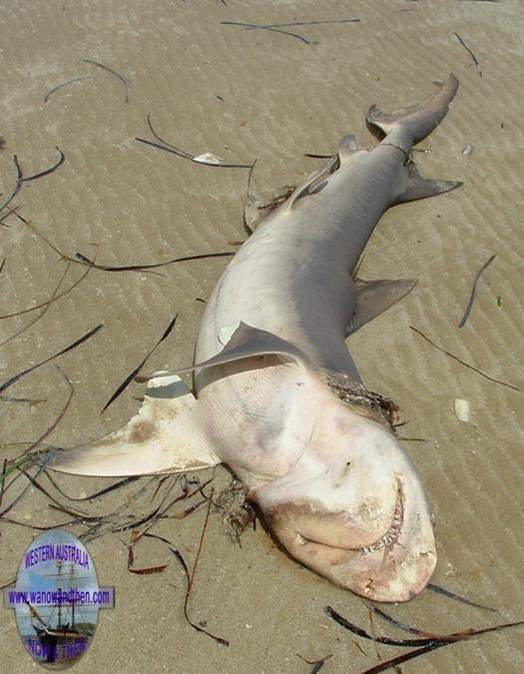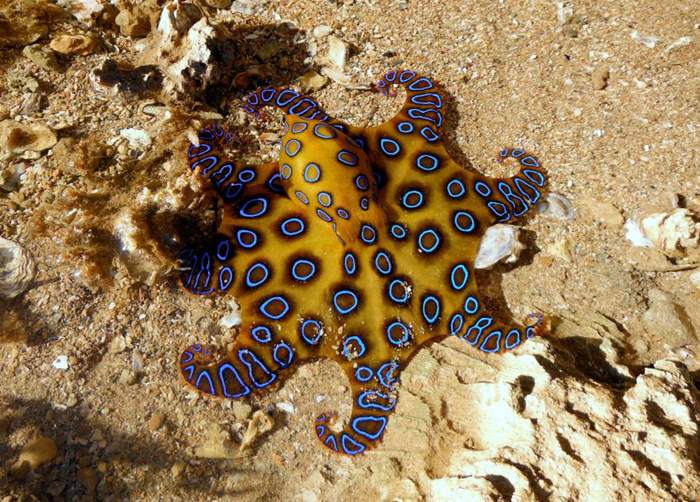|
|
|||
|
|
|
|
|
|
|
|||
DANGEROUS CREATURESof Western Australia
|
|
|
|
|
|
WE NEED YOUR SUPPORT. |
|
|
|
|
Australia has more than it's fair share of dangerous fauna, ranging from marine creatures like sharks, blue ringed octopus, marine stingers, cone shells, poisonous fish, sea snakes, stingrays, and saltwater crocodiles, to land based dangers like spiders, scorpions, centipedes and snakes.
From this list alone it might seem that the inhabitants of the 'sunburned country' face constant peril at every turn. Fortunately if you are sensible and take reasonable precautions, the chance of ever coming face to face with one of these hazards is fairly remote.
If you go swimming it is wise to look for signs warning you of danger, (especially in crocodile country). Don't swim alone or pick up shells with your fingers as they may contain a blue ringed octopus, or it may be a cone shell which can shoot a poisonous dart into you if handled.
Don't swim in the tropical north during the 'stinger season'. Don't panic if a sea snake comes near you. They are inquisitive and if left alone will swim away. If you are wading in the tropics either in sandy areas or on reefs, wear stout footwear. If you go bush walking, wear good walking boots and thick walk socks to help lessen the effects of snake bite. Don't poke around under logs or stick you fingers in places spiders may be lurking.
If you are bitten, stung, or spiked, don't panic. Keep as calm as possible and allow those travelling with you to take the necessary steps. See our First Aid page for advice.
For most marine venoms the only effective treatment is to immerse the effected area in very hot water (as hot as you can possibly stand it) as these toxins quickly break down when exposed to heat. (45 degrees Celsius is the official recommended temperature.)
Many venoms affect the central nervous system and result in respiratory failure. Mouth to mouth respiration and cardiac massage may be required for extended periods if you are not close to a hospital.
The main message with resuscitation is NEVER GIVE UP!
For jellyfish stings (especially sea wasp stings) do not try to rub them off with a towel. Remove any tentacles carefully and wash the sting site with vinegar.
Dingo (click link to see more)
Snakes
Australia has the un-enviable reputation of having some of the most venomous snakes in the world. Although some snakes are non-venomous and others are just legless lizards, it is better to always treat everything that looks like a snake as potentially dangerous and stay well away from it.
When walking in the bush wear stout footwear and thick socks, don't poke around under logs and avoid putting you feet in places you can't clearly see. Stepping over fallen logs without being able to see what is on the other side is a good way to get bitten.
Snakes are not usually aggressive, although the tiger snake and king brown can be more so than most. In most situations a snake will seek to escape if allowed to do so.
DON'T go round killing every snake you see. They are an important part of the eco system and they have as much right to their lives as anything else. If you find a snake in your garden, shed or even inside the house, simply ring your local shire council and arrange for an experienced snake handler to come and remove it. Most people are bitten when trying to kill snakes, so don't do it.
For snakebite and other similar venom injections, always apply a compression bandage to delay the onset of problems. Keep the victim still, if possible, to slow circulation. The compression bandage needs to be wound tightly along the limb (it's usually a leg or arm which is bitten) from the bite site right up the limb. Then place a splint on the limb to restrict movement even further.
The theory behind this method of treatment is that most snakes have short fangs and the venom is more likely to enter the lymph system than the blood system. A compression bandage will hold most of the venom in place until you can reach assistance.
There is no need to attempt to kill the snake for identification as hospitals now carry venom identification kits which will allow the doctor to determine what type of snake injected the poison. It is IMPORTANT NOT to wash the site of the bite as this is where a sample of venom may be obtained.
Sea Snakes
Sea snakes have highly toxic venom but are usually not aggressive. They are inquisitive and may come over to investigate swimmers or (more usually) divers. If unprovoked they usually swim away when their curiosity has been satisfied.
Unlike land snakes, sea snakes have short fangs usually located at the rear of their mouths. It is unusual for them to bite humans but extreme care should be taken when they are about. If accidentally caught on a fishing line (and they regularly are) it is much safer to cut the line rather than try to get the hook out.
Spiders
The most dangerous spider in W.A. is the red back. It is a relation of the American black widow and is responsible for a number of bites every year. Unfortunately they like to live where people live and can often be found on the underside of outdoor furniture and other places close to us. The bite is not usually fatal but can require hospitalisation.
Some other spiders, especially the white tailed spider, are also venomous to humans but none have the potential to do the harm of the red back.
Centipede
Although not often seen centipedes are actually quite common in Australia. They are not regarded as life threatening but they can inflict a very painful bite. The name may suggest that they have 100 legs but in reality they rarely have more than 40 or 50.
Poisonous fish
There are two main types of poisonous fish, ones that sting and ones that are poisonous to eat. Fish that have venomous barbs include the stonefish (see below), the lion fish, the spine foot and to a lesser extent catfish and flat head.
Fish that are poisonous to eat include the toad fish (known locally as blow fish) and sometimes large members of usually non-toxic fish that accumulate poison (called ciguatera) in their bodies as they grow older from their eating habits. These include fish like red bass or chinaman.
Stonefish
Stonefish as the name suggests, resemble a weedy stone lying on the sea bed. They have a large number of poisonous spines along the back which cause intense and prolonged pain if you manage to tread on one without adequate protection on your feet. They are most commonly located in tropical areas and are regularly caught when fishing in small tidal creeks.
The treatment for most marine toxins is to immerse the wound site in very hot water. 45C is recommended.
There are two species of stonefish that live in Australian coastal waters.
Cone shells
Cone shells are potentially deadly as their venom is very powerful and they have been responsible for fatalities in the past. They should NEVER under any circumstances be handled. They are equipped with a dart that can be fired from an extendable proboscis and this means there is no safe way to pick them up.
Jellyfish
There are many types of jellyfish in Australian waters and only a few species are harmful to humans. The box jellyfish (Carybdea alata) and Irukandji Jellyfish (Carukua barnesi) are highly dangerous. They are usually found in tropical waters along the north coast but warm currents can sometimes sweep them further south.
A number of people have died as a result of being stung by these species and in 'stinger season' safe swimming area nets are sometimes deployed. The box jellyfish is said to be responsible for more human fatalities than sea-snakes, sharks and crocodiles combined.
The recommended treatment if someone is stung by any jellyfish is to douse the area with liberal quantities of vinegar and then carefully brush away any remaining tentacles with a towel. Medical assistance should then be sought as soon as possible.
Sting rays
Sting rays are common all along the West Australian coast and care should always be taken when wading in the shallows. Most stings from sting rays are not lethal but large harbour rays have killed a number of people in the past (there are at least 17 fatalities worldwide that have been linked to stingrays.) The most famous incident being the death of Steve Irwin, who with his knowledge of animals, should have known better than to get too close, but he was far from the first to be killed by this seemingly innocuous animal. There was even one incident of a large ray leaping out of the water into a boat and stinging a child who subsequently died.
Sharks
People's fear of sharks is deep seated. Sharks are very efficient predators, and it is extremely unwise to be in the water if they are agitated or excited.
Although the species considered dangerous are a small percentage of the total number of species found in Australian waters, you must always be aware of the dangers.
While it is true that you are more likely to be struck by lightning than attacked by a shark, the latter is a far more horrifying prospect.
Do not swim in cloudy water, or at dawn or dusk. Swim where there are groups of people, don't swim alone. Sharks sometimes swim miles up rivers, so being a distance from the sea is no guarantee of safety. After a close encounter with a shark in the Swan River as a teenager, I now swim only in swimming pools.
In case of shark attack remove the victim from the water as soon as possible, apply a tourniquet if possible or pack wounds with bandages. To slow bleeding keep pressure on wounds. Lie the victim head down, elevate the legs (keep the blood supply flowing to the brain) Obviously get the victim to medical aid as soon as possible.
The three most dangerous species of shark in Australian waters are the great white, the tiger shark and the bull shark. Bull sharks don't get the publicity of their two larger cousins but they are responsible for more attacks that the other two species put together.
Blue Ringed Octopus (click link to see more)
Crocodiles (click link to see more)
There are numerous other animals that are potentially dangerous including kangaroos, emus, cassowaries and even small creatures like bees, wasps and ants.
Always be careful when dealing with any kind of animal as sometimes the most innocuous can turn out to be the most lethal.
|
|
Become a supporter of this website for just $5 a month
|












